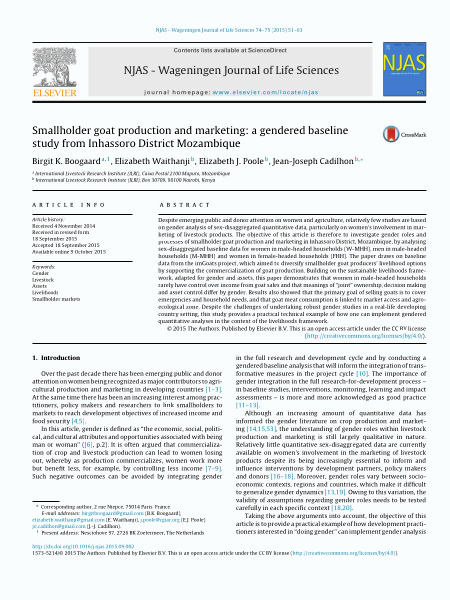Smallholder goat production and marketing: A gendered baseline study from Inhassoro District Mozambique
Abstract
Despite emerging public and donor attention on women and agriculture, relatively few studies are based on gender analysis of sex-disaggregated quantitative data, particularly on women's involvement in marketing of livestock products. The objective of this article is therefore to investigate gender roles and processes of smallholder goat production and marketing in Inhassoro District, Mozambique, by analysing sex-disaggregated baseline data for women in male-headed households (W-MHH), men in male-headed households (M-MHH) and women in female-headed households (FHH). The paper draws on baseline data from the imGoats project, which aimed to diversify smallholder goat producers’ livelihood options by supporting the commercialization of goat production. Building on the sustainable livelihoods framework, adapted for gender and assets, this paper demonstrates that women in male-headed households rarely have control over income from goat sales and that meanings of “joint” ownership, decision making and asset control differ by gender. Results also showed that the primary goal of selling goats is to cover emergencies and household needs, and that goat meat consumption is linked to market access and agro-ecological zone. Despite the challenges of undertaking robust gender studies in a real-life developing country setting, this study provides a practical technical example of how one can implement gendered quantitative analyses in the context of the livelihoods framework.

